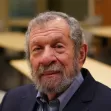The Daily Source of Urban Planning News

FEATURE
The Faith-Based Gap in the Institutional Landscape of Cities
By focusing on their common interest in working toward the public good, the gap between faith-based institutions and the planning processes of their communities can be bridged.
Adapting to Rising Seas in Boston with Venice-Style Canals
The latest example of a coastal city designing urban resilience as both amenity and infrastructure—a plan to build Venice-style canals in Boston.
Streetscape Improvements in The Castro Include New, Improved Rainbow Design
Not to be outdone by West Hollywood, San Francisco's premier gay neighborhood has painted crosswalks on Castro Street in rainbow colors. However, it's only one part of a much bigger streetscape improvement project that involved huge community input.
Leadership Change, Layoffs for Las Vegas Downtown Project
The high-profile Downtown Project in Las Vegas, led by Zappos CEO Tony Hsieh, made the wrong kind of news this week.

Gentrification's Liberal Enablers
Gavin Mueller writes a withering critique of the forces behind gentrification and the liberal justifications that allow poverty and racism to persist.
Economists Give Uber and Lyft a Resounding Thumbs Up
A recent survey of the Initiative on Global Markets Economic Experts Panel found clear and broad support for the economic benefits of transportation network companies.
The Case for Selling Air Rights
Scott Beyer argues that more compact, vertically-oriented cities, like Seattle, San Francisco, Chicago, and Washington D.C., should sell the air rights above public projects.
Map Shows the Transportation Agencies Buying Buses and Trains
Looking for a mapping tool that makes it easy to reference news about which agencies are buying what kind of rolling stock and when?
Perfect Logic—Why Drivers and Transit Users Support Public Transportation
The American Public Transportation Association's Director of Policy Development and Research responds to Eric Jaffe's question: "If So Many People Support Transit, Why Do So Few Ride?"
The 'Rule of Two' that Allows Drivers to Kill
An op-ed column by Dana M. Lerner, a New Yorker whose 9-year-old son was struck and killed by taxi while crossing the street earlier this year, explains the legal precedent that lets drivers get away with murder.
AT&T Planning for Growth of 'Connected Car' Market
AT&T is predicting a growth market for wholesale customer relationships with car manufacturers.
Flat Tops No Longer Required for Los Angeles Skyscrapers
Emily Alpert Reyes reports that Los Angeles has overturned a long-standing requirement for its skyscrapers to have flat roofs to accommodate the fire department's helicopters in the event of an emergency.
Do Drivers Know to Give Cyclists a Three-Foot Buffer when Passing?
On September 16, California's newest bicycle law went into effect, the "Three Feet for Safety Act" law. However, most motorists are unaware of it. Maybe a new sign will help.
The Look and Feel of 'Inherently Urban'
Greek orators, current solution-based efforts, and 25 photographs remind us of the central role of human opportunity in the urban environment.

A Conservative's Response to Joel Kotkin
A column by Reihan Salam takes exception to Joel Kotkin's recent portrayal of "anti-suburban conservatives."
Two Narratives Derived from New Commute Data
When it comes to making sense of the American Community Survey's data on commute times, it's all about how you frame the data.

Why Design Matters in Transportation Infrastructure Design
New Jersey School of Architecture Director Darius Sollohub writes that transportation planners and engineers should consider what their infrastructure designs will say to today's users and future generations in an essay in InTransition magazine.
Can Boston Change its 'Wink and Nod' Development Process?
A reborn plan to raze the Winthrop Square parking garage and replace it with the tallest building in Boston will provide a test for new Boston Mayor Martin J. Walsh.
'eHighway' Pilot to Deliver Clean Air for Southern California Ports
Nate Berg details the "eHighway" road design project that will move goods away from the ports of Los Angeles and Long Beach.
Why Smart Cities Must be Sharing Cities
Julian Agyeman and Duncan McLaren make the case that the only smart city is a shareable city.
Pagination
Yukon Government
Caltrans
New Jersey Institute of Technology
Mpact (founded as Rail~Volution)
City of Camden Redevelopment Agency
City of Norman, Oklahoma
City of Portland
City of Laramie
Urban Design for Planners 1: Software Tools
This six-course series explores essential urban design concepts using open source software and equips planners with the tools they need to participate fully in the urban design process.
Planning for Universal Design
Learn the tools for implementing Universal Design in planning regulations.


































